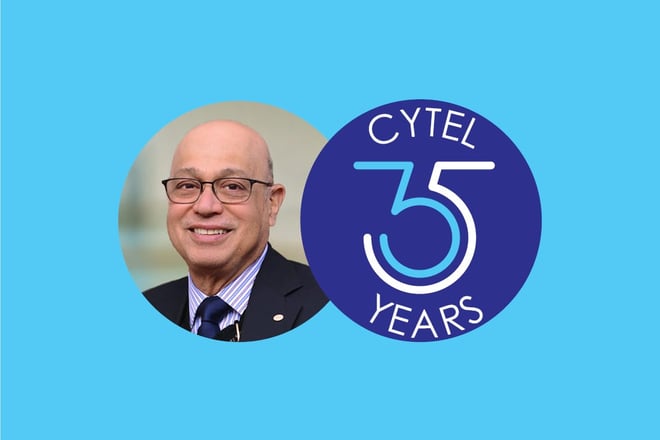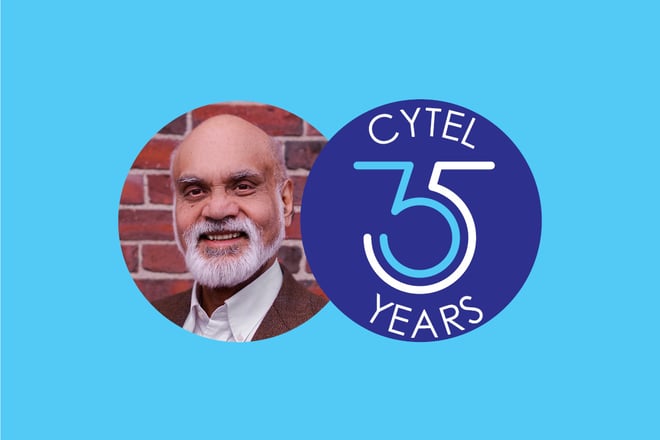Industry Voices: Dr. Parvin Fardipour on New Horizons in Data Science


In the following interview, Dr. Parvin Fardipour, Quantitative Strategies & Data Science, sits down with Heather Struntz to discuss the evolution of the learning phases of clinical trials (Phases 1 and 2), the development of new investigational drug combinations, the importance of dose-finding data in the confirmatory phase (Phase 3), Bayesian designs, and the future of data science in designing clinical trials.
To begin, can you tell us a bit about how the learning phases that span from Phase 1 to Phase 2 is evolving in the industry?
Addressing the research questions is extremely important in this phase. That is, “What is the optimal dose or recommended dose(s) for dose expansion?” And “How do you identify cohorts of subjects that benefit from the new therapy?” To address these questions, we need to assess various design types and select the best design that fits our requirements. There are so many different design types that have evolved in recent years. Researchers need to assess different design types before selecting the best design for their product.
You mentioned there are many different design types that have evolved recently, what are some examples of such designs in the learning phases?
In recent decades, the landscape for Phase 1 trials has been rapidly shifting, noticeably marked by the emergence of interval-based designs, such as the toxicity probability interval (TPI) design1 and two subsequent modifications, the mTPI2 and mTPI-23 designs. In parallel, the cumulative cohort design (CCD)4 and the Bayesian optimal interval (BOIN) design5 further simplify the statistical inference based on a point estimate of toxicity probability and prespecified interval boundaries. They competed with more nuanced model-based designs like Bayesian Logistic Regression Models (BLRM). Finally, in 2019, the evolutionary step of Phase 1 dose-finding designs spirals back to the rule-based approaches in the form of the i3+3 design,6 invented by our colleagues at Cytel, which shows the potential of smart rule-based designs that can achieve comparable operating characteristics to model-based designs. Hence, the Phase 1 design journey can be shown as:

Note: The continual reassessment method (CRM) is the first Bayesian model-based design proposed by O’Quigley et al. (1990). It uses information from all doses to guide decision-making. Neuenschwander et al. (2008) extend the CRM and propose the Bayesian logistic regression model (BLRM).
All these designs are developed to address the needs for single-agent dose-finding designs with toxicity endpoint and cohort enrollment. Typically, you enroll subjects in cohorts, follow the enrolled cohort for a certain time period (e.g., 28 days), and then apply sequential decisions that determine the dose level for each cohort based on the observed toxicity data. Accrual is suspended after enrollment of each cohort of subjects until all the subjects in the current cohort have been fully followed with definitive dose limiting toxicity (DLT) or non-DLT outcomes.
This type of cohort-based design can be inefficient, especially if the trial needs to be frequently suspended.7 For example, subsequent subjects can be turned away during accrual suspension, resulting in a waste of potential patients, a precious resource. In addition, clinical trial duration is prolonged due to these suspensions. To shorten the study duration of Phase 1 trials and reduce the number of accrual suspensions, a number of rolling-enrollment designs, which allow concurrent subject enrollment, but which are faster than cohort-based enrollment, have been developed for single-agent dose-finding designs with toxicity endpoint and rolling enrollment.
Designs such as Rolling 6,8 Rolling Toxicity Probability Interval,9 and Probability-of-Decision Toxicity Probability Interval Design10 extend the 3+3 design with the aim to reduce the occurrence of accrual suspension after enrolling each set of three subjects, thereby accelerating the trial.
How do gene and adaptive cell therapies impact the landscape of learn phase designs?
Gene therapies and adaptive cell therapies (ACTs), such as the chimeric antigen receptor (CAR) T-cell therapy, have demonstrated promising therapeutic effects in oncology subjects. An important and distinct feature of some ACTs is that the probability of response may not increase with dose, which is normally seen for cytotoxic cancer therapeutics.
For example, Porter et al. have shown that an increased dose of CAR T-cells does not necessarily lead to higher efficacy.11 Because of the potential non-monotonic relationship between response and dose, traditional Phase 1 dose-finding designs searching for the maximum tolerated dose (MTD) are not suitable to ACTs.
For single-agent dose-finding designs with the efficacy & toxicity endpoints and cohort enrollment, joint toxicity and efficacy endpoints are superior. Joint i3+3 (which builds upon the i3+3 design),12 Probability Intervals of Toxicity and Efficacy,13 EffTox,14 and UBOIN15 all use joint toxicity and efficacy outcomes as endpoints for dose finding. The goal is to identify the optimal biological dose (OBD) that possesses high efficacy and safety simultaneously.
There is growing interest in the development of new investigational drug combinations. Can “single-agent” dose-finding designs be applied to combination therapies?
One of the challenges in combination therapy development is to find the optimal dose of each drug when using in combination with others. Due to the unknown varieties of potential interactions between drugs (that is, synergy, antagonism, or no interaction), the optimal dose combination might differ from the combination of the optimal dose of each drug when used alone.
Dose-finding trials for two agents have the goal of capturing the dose-toxicity relationship for drug combinations and to identify one or more maximum tolerated dose combinations (MTDC) or an MTD contour. A scientific way of characterizing the drug combination-toxicity profile is to test all possible combinations of candidate dose levels of two drugs. However, such an approach might be impractical because of the number of combinations that might be too large for an early-phase trial. For example, if two drugs are to be investigated, each with three dose levels, there will be a total of nine possible combinations (3 × 3 = 9). If more than two drugs are involved, this number grows exponentially to dozens or even hundreds.
In practice, trialists often escalate the dose level of one drug by holding the dose of another drug at a fixed level. For example, in a Phase 1 trial of a newly targeted monoclonal antibody (mAb) combined with a PD-1 inhibitor, say pembrolizumab, the dose of PD-1 is often fixed at the approved level (say, 3 mg/kg) and the dose levels of mAb are varied. If so, some single-agent dose-finding designs, such as mTPI-216 and i3+3,17 could be adopted. However, such an approach may miss the global optimal dose combination since one drug is always at a fixed dose. For example, the optimal dose level of PD-1 when administrated in combination with the mAb might be 1 mg/kg, rather than 3 mg/kg.
To this end, “single-agent” dose-finding designs might not be the most scientific way to identify the dual-agents’ optimal dose. How to efficiently explore the drug combination-toxicity profile is a statistical problem that requires effective modeling and decision-making. In recent years, a large number of designs have been proposed to find the MTDC of dual-agents cohort-based designs. The MTDC is defined as the highest dose combination at which the probability that a patient experiences the DLT is closest to or less than a pre-specified target rate, which is usually determined by physicians or clinical teams. Some of these designs have been applied to real-world trials. For example, a combination dose-finding trial18 uses the Combo i3+319 design based on the research of the Cytel team.

Let us segue into when the industry would embark on using Multiple Cohort Expansion. Could you discuss why this is an important part of modern early-phase development?
Oftentimes, multiple doses of a new drug are tested in multiple indications to identify the promising doses and arms for Phase 2 or Phase 3 trials. Traditionally, each dose or indication is tested separately in a single trial, resulting in multiple protocols and multiple trials. A new solution is to use a design such as the multiple cohort expansion (MUCE) design.20 MUCE is a Bayesian solution for cohort expansion trials, or master protocol trials, in which multiple dose(s) and multiple indication(s) are expanded in parallel. It’s built on Bayesian hierarchical models with multiplicity control to adaptively borrow information across patient groups from different indications who are treated with different doses to achieve three major goals:
1) controlling the type I error rate (probability of selecting an unpromising drug for further development);
2) increasing power (probability of selecting a promising drug for further development); and
3) reducing sample size.
There are also other design types for the Basket Trial Designs that have been developed recently, such as the calibrated Bayesian hierarchical model (CBHM) by Chu and Yuan,21 subgroup cluster-based Bayesian adaptive (SCUBA) design,22 Bayesian Optimal Design for Phase 2 clinical trials (BOP2) with simple and complex endpoints,23 the exchangeability/nonexchangeability (EXNEX) method in Neuenschwander et al.24 and the Bayesian hierarchical model (BBHM) proposed by Berry et al.25
What challenges have others/clients encountered in the learn phase and how did they overcome them?
Most of the time, the tendency is to use the approach that the clinical team is familiar with and has used previously. For example, if the BLRM approach is used in the previous trial and the clinical team is familiar with the methodology, then they may tend to default to using it for the current trial instead of exploring a new statistical approach that could be more applicable. It is always good practice to simulate the operating characteristics of the desired design for the given trial using different methodology and related approaches.
In an ideal world, how do you describe the clinical development plan for an asset?
We recommend beginning your development plan with the end in mind. Design needs to be considered at the development plan instead of at the study level. For example, when designing a Phase 1 study, consider which population you plan to enrich; what indication you are targeting; should the subject cohort be considered in your Phase 1 dose-escalation or dose-expansion trial design? Should seamless design be helpful in expediting your development plan? And, most importantly, have you considered new methodological approaches in your trial design?
We are seeing more dose-finding data being used to design confirmatory (i.e., Phase 3) trials. This suggests that finding the right dose is not just important scientifically and ethically, but also strategically. What should sponsors do to mitigate this?
A sponsor needs to slow down in order to speed up. Finding the right dose to take to Phase 3 is a critical element of successful clinical development. Early-phase trials need to be dedicated to learning about the therapy (i.e., drug or device) and hence sufficient time needs to be spent to find the right dose and the right population that benefits from the new treatment.
We continue to see interest in Bayesian designs and Bayesian methods. What are the main lessons you have seen the industry learn about Bayesian since the start of the pandemic?
With a Bayesian approach, one can use the Bayesian prior, or historical information, to find the most tolerated and efficacious dose for the confirmatory trial. This information can be from the same study in previous phases or from different regions or studies conducted for the same compound. This gives the benefit of enriching the decision-making at an early phase with a smaller number of subjects, especially if the disease is rare or has slower enrollment.
Can you do seamless design with a Bayesian method?
Yes, we can do the seamless Phase2/3 designs with Bayesian method. At the end of the Phase 2 stage, the design makes a go/no-go decision based on Bayesian go/no-go criteria first, and then you select one of the specified doses as the treatment arm for the Phase 3 trial based on the Bayesian selection criteria.
Looking ahead, what would you say is on the horizon for data science?
At Cytel, we continuously develop new methodology and technology to provide stellar service to our clients. The East Bayes software that is focused on learning phases of clinical development is continuously expanding to house new methodology and provide an opportunity for our clients to assess and simulate various approaches. We continue to add more methodology such as enhancing further the enrichment design and including multiple endpoints that is important to clinical trial design.

And finally, are there any words of wisdom you would like to share with those entering the field now?
Researchers need to utilize all the resources that are available to them to assess the performance of their asset. Sometimes this requires spending more time early in the development cycle to identify the strength of their asset. The best approach is to allow for the asset to speak for itself by providing it with the appropriate apparatus.
Thank you for sharing your insights!
Industry Voices is a new column featuring a series of interviews with Cytel's thought leaders on their respective areas of expertise. Stay tuned for more Industry Voices to come.
Read more from Perspectives on Enquiry & Evidence:
Sorry no results please clear the filters and try again

Cyrus Mehta on the Founding of Cytel

Nitin Patel on 35 Years of Technological Innovation
Notes:
1 Ji et al., 2007
2 Ji et al., 2010; and Ji and Wang, 2013
3 Guo et al., 2017b
4 Ivanova et al., 2007
5 Liu and Yuan, 2015a
6 Liu et al., 2020
7 See Skolnik et al. (2008); and Doussau et al. (2016)
8 Skolnik et al., 2008
9 Guo et al., 2019
10 Zhou et al., 2019
11 Porter et al. 2011
12 Lin and Ji, 2020b
13 Lin and Ji, 2020a
14 Thall and Cook, 2004
15 Zhou et al., 2019
16 Guo et al., 2017b
17 Liu et al., 2020
18 NCT02366819
19 Yuan et al., 2021)
20 Lyu et al., 2020
21 Chu and Yuan, 2018a
22 Guo et al., 2017a
23 Zhou et al., 2017
24 Neuenschwander et al., 2016
25 Berry et al., 2013



